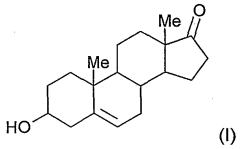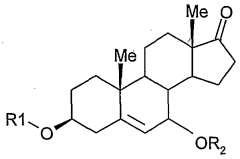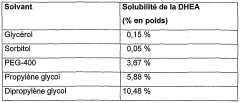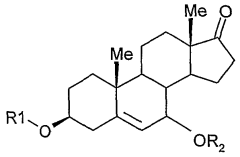How Dipropylene Glycol Leads to Advancements in Skincare Preparation?
JUL 7, 20259 MIN READ
Generate Your Research Report Instantly with AI Agent
Patsnap Eureka helps you evaluate technical feasibility & market potential.
DPG in Skincare: Background and Objectives
Dipropylene glycol (DPG) has emerged as a pivotal component in the advancement of skincare preparations, revolutionizing the industry with its multifaceted properties. This versatile compound, a colorless and odorless liquid, has been increasingly utilized in cosmetic formulations due to its unique characteristics that address various skincare needs.
The evolution of DPG in skincare can be traced back to the mid-20th century when the cosmetic industry began exploring synthetic ingredients to enhance product efficacy. As consumer demands for more sophisticated and effective skincare solutions grew, researchers turned their attention to compounds that could serve multiple functions within a single formulation. DPG, with its excellent solvent properties and moisturizing capabilities, quickly gained prominence in this landscape.
The primary objective of incorporating DPG into skincare preparations is to improve product performance across several dimensions. Firstly, DPG acts as an effective humectant, attracting and retaining moisture in the skin, thus addressing one of the fundamental aspects of skincare – hydration. This property is particularly valuable in combating dry skin conditions and maintaining overall skin health.
Furthermore, DPG's role as a solvent enhances the solubility and stability of various active ingredients in skincare formulations. This capability allows for the integration of a wider range of beneficial compounds, including those that might otherwise be challenging to incorporate due to solubility issues. As a result, skincare products can deliver a more comprehensive array of active ingredients to the skin, potentially increasing their therapeutic effects.
Another significant objective in utilizing DPG is to improve the texture and application of skincare products. Its low viscosity and excellent spreadability contribute to creating formulations that are easy to apply and quickly absorbed by the skin. This characteristic not only enhances the user experience but also potentially improves the efficacy of the product by ensuring better penetration of active ingredients into the skin.
The technological advancements facilitated by DPG align with the broader trends in the skincare industry, which increasingly focus on multi-functional, scientifically-backed ingredients. As consumers become more educated about skincare ingredients and their effects, the demand for products that can deliver multiple benefits simultaneously has grown. DPG's versatility in addressing various skincare concerns makes it an ideal candidate for meeting these evolving consumer expectations.
In the context of product development, the incorporation of DPG represents a shift towards more sophisticated formulation techniques. Cosmetic chemists and researchers are continually exploring new ways to leverage DPG's properties to create innovative skincare solutions. This ongoing research aims to unlock further potential applications of DPG, potentially leading to even more advanced skincare preparations in the future.
The evolution of DPG in skincare can be traced back to the mid-20th century when the cosmetic industry began exploring synthetic ingredients to enhance product efficacy. As consumer demands for more sophisticated and effective skincare solutions grew, researchers turned their attention to compounds that could serve multiple functions within a single formulation. DPG, with its excellent solvent properties and moisturizing capabilities, quickly gained prominence in this landscape.
The primary objective of incorporating DPG into skincare preparations is to improve product performance across several dimensions. Firstly, DPG acts as an effective humectant, attracting and retaining moisture in the skin, thus addressing one of the fundamental aspects of skincare – hydration. This property is particularly valuable in combating dry skin conditions and maintaining overall skin health.
Furthermore, DPG's role as a solvent enhances the solubility and stability of various active ingredients in skincare formulations. This capability allows for the integration of a wider range of beneficial compounds, including those that might otherwise be challenging to incorporate due to solubility issues. As a result, skincare products can deliver a more comprehensive array of active ingredients to the skin, potentially increasing their therapeutic effects.
Another significant objective in utilizing DPG is to improve the texture and application of skincare products. Its low viscosity and excellent spreadability contribute to creating formulations that are easy to apply and quickly absorbed by the skin. This characteristic not only enhances the user experience but also potentially improves the efficacy of the product by ensuring better penetration of active ingredients into the skin.
The technological advancements facilitated by DPG align with the broader trends in the skincare industry, which increasingly focus on multi-functional, scientifically-backed ingredients. As consumers become more educated about skincare ingredients and their effects, the demand for products that can deliver multiple benefits simultaneously has grown. DPG's versatility in addressing various skincare concerns makes it an ideal candidate for meeting these evolving consumer expectations.
In the context of product development, the incorporation of DPG represents a shift towards more sophisticated formulation techniques. Cosmetic chemists and researchers are continually exploring new ways to leverage DPG's properties to create innovative skincare solutions. This ongoing research aims to unlock further potential applications of DPG, potentially leading to even more advanced skincare preparations in the future.
Market Analysis: DPG-Enhanced Skincare Products
The global skincare market has witnessed significant growth in recent years, with a particular emphasis on products incorporating advanced ingredients like Dipropylene Glycol (DPG). This multifunctional compound has gained traction in the skincare industry due to its versatile properties, contributing to the development of more effective and innovative formulations.
DPG-enhanced skincare products have shown a steady increase in market share, driven by consumer demand for high-performance, multi-benefit solutions. The market for these products is expected to continue its upward trajectory, as consumers become more educated about skincare ingredients and their benefits. This trend is particularly pronounced in regions with a strong beauty culture, such as Asia-Pacific and North America.
One of the key factors driving the growth of DPG-enhanced skincare products is their ability to address multiple skin concerns simultaneously. Products containing DPG often boast improved hydration, better ingredient penetration, and enhanced texture, appealing to a wide range of consumers seeking comprehensive skincare solutions. This versatility has led to the incorporation of DPG in various product categories, including moisturizers, serums, and masks.
The market for DPG-enhanced skincare products has also benefited from the clean beauty movement. As a synthetic ingredient with a good safety profile, DPG aligns well with consumer preferences for products that balance efficacy with safety. This has led to its increased adoption by both established skincare brands and emerging clean beauty companies.
In terms of distribution channels, e-commerce has played a crucial role in the growth of DPG-enhanced skincare products. Online platforms have provided a space for education and product discovery, allowing consumers to learn about the benefits of DPG and make informed purchasing decisions. This has been particularly important for niche and premium brands that have leveraged DPG as a key differentiator in their formulations.
The market for DPG-enhanced skincare products has also seen significant innovation in terms of product formats and delivery systems. Brands are exploring novel ways to incorporate DPG into their formulations, such as microencapsulation technologies and smart delivery systems, to maximize its benefits and create unique selling propositions.
Looking ahead, the market for DPG-enhanced skincare products is poised for continued growth. As research into the benefits of DPG in skincare applications expands, we can expect to see more targeted and specialized products entering the market. Additionally, the increasing focus on personalized skincare solutions may lead to the development of customized formulations that leverage DPG's versatile properties to address individual skin concerns.
DPG-enhanced skincare products have shown a steady increase in market share, driven by consumer demand for high-performance, multi-benefit solutions. The market for these products is expected to continue its upward trajectory, as consumers become more educated about skincare ingredients and their benefits. This trend is particularly pronounced in regions with a strong beauty culture, such as Asia-Pacific and North America.
One of the key factors driving the growth of DPG-enhanced skincare products is their ability to address multiple skin concerns simultaneously. Products containing DPG often boast improved hydration, better ingredient penetration, and enhanced texture, appealing to a wide range of consumers seeking comprehensive skincare solutions. This versatility has led to the incorporation of DPG in various product categories, including moisturizers, serums, and masks.
The market for DPG-enhanced skincare products has also benefited from the clean beauty movement. As a synthetic ingredient with a good safety profile, DPG aligns well with consumer preferences for products that balance efficacy with safety. This has led to its increased adoption by both established skincare brands and emerging clean beauty companies.
In terms of distribution channels, e-commerce has played a crucial role in the growth of DPG-enhanced skincare products. Online platforms have provided a space for education and product discovery, allowing consumers to learn about the benefits of DPG and make informed purchasing decisions. This has been particularly important for niche and premium brands that have leveraged DPG as a key differentiator in their formulations.
The market for DPG-enhanced skincare products has also seen significant innovation in terms of product formats and delivery systems. Brands are exploring novel ways to incorporate DPG into their formulations, such as microencapsulation technologies and smart delivery systems, to maximize its benefits and create unique selling propositions.
Looking ahead, the market for DPG-enhanced skincare products is poised for continued growth. As research into the benefits of DPG in skincare applications expands, we can expect to see more targeted and specialized products entering the market. Additionally, the increasing focus on personalized skincare solutions may lead to the development of customized formulations that leverage DPG's versatile properties to address individual skin concerns.
Current Applications and Challenges of DPG
Dipropylene glycol (DPG) has emerged as a versatile ingredient in skincare preparations, offering a wide range of applications and benefits. As a humectant and solvent, DPG plays a crucial role in enhancing the efficacy and texture of various skincare products. Its primary function is to attract and retain moisture, making it an essential component in hydrating formulations such as moisturizers, serums, and toners.
In skincare preparations, DPG serves as an excellent carrier for active ingredients, facilitating their penetration into the skin. This property has led to its widespread use in anti-aging products, where it helps deliver potent ingredients like retinol and peptides more effectively. Additionally, DPG's ability to dissolve both oil-soluble and water-soluble ingredients makes it invaluable in creating stable emulsions and improving the overall consistency of skincare formulations.
The cosmetic industry has also embraced DPG for its mild nature and low irritation potential, making it suitable for sensitive skin formulations. Its inclusion in sunscreens has shown to enhance the product's spreadability and absorption, leading to improved sun protection efficacy. Furthermore, DPG's antimicrobial properties contribute to the preservation of skincare products, extending their shelf life and reducing the need for additional preservatives.
Despite its numerous advantages, the use of DPG in skincare preparations faces several challenges. One primary concern is the potential for skin sensitization in a small percentage of individuals, particularly when used in high concentrations. This necessitates careful formulation and thorough safety testing to ensure product compatibility across diverse skin types.
Another challenge lies in the sourcing and production of DPG. As consumer demand for natural and sustainable ingredients grows, the synthetic nature of DPG has come under scrutiny. Manufacturers are now tasked with finding eco-friendly alternatives or developing more sustainable production methods for DPG to align with market trends and environmental concerns.
The regulatory landscape surrounding DPG usage in cosmetics also presents challenges. While generally recognized as safe, varying global regulations on concentration limits and labeling requirements complicate product formulation for international markets. Skincare companies must navigate these regulatory differences to ensure compliance across different regions.
Lastly, the efficacy of DPG in combination with other ingredients remains an area of ongoing research. As new active ingredients emerge in the skincare industry, formulators face the challenge of optimizing DPG's role in these complex formulations to maximize product performance without compromising stability or safety.
In skincare preparations, DPG serves as an excellent carrier for active ingredients, facilitating their penetration into the skin. This property has led to its widespread use in anti-aging products, where it helps deliver potent ingredients like retinol and peptides more effectively. Additionally, DPG's ability to dissolve both oil-soluble and water-soluble ingredients makes it invaluable in creating stable emulsions and improving the overall consistency of skincare formulations.
The cosmetic industry has also embraced DPG for its mild nature and low irritation potential, making it suitable for sensitive skin formulations. Its inclusion in sunscreens has shown to enhance the product's spreadability and absorption, leading to improved sun protection efficacy. Furthermore, DPG's antimicrobial properties contribute to the preservation of skincare products, extending their shelf life and reducing the need for additional preservatives.
Despite its numerous advantages, the use of DPG in skincare preparations faces several challenges. One primary concern is the potential for skin sensitization in a small percentage of individuals, particularly when used in high concentrations. This necessitates careful formulation and thorough safety testing to ensure product compatibility across diverse skin types.
Another challenge lies in the sourcing and production of DPG. As consumer demand for natural and sustainable ingredients grows, the synthetic nature of DPG has come under scrutiny. Manufacturers are now tasked with finding eco-friendly alternatives or developing more sustainable production methods for DPG to align with market trends and environmental concerns.
The regulatory landscape surrounding DPG usage in cosmetics also presents challenges. While generally recognized as safe, varying global regulations on concentration limits and labeling requirements complicate product formulation for international markets. Skincare companies must navigate these regulatory differences to ensure compliance across different regions.
Lastly, the efficacy of DPG in combination with other ingredients remains an area of ongoing research. As new active ingredients emerge in the skincare industry, formulators face the challenge of optimizing DPG's role in these complex formulations to maximize product performance without compromising stability or safety.
Existing DPG Incorporation Techniques
01 Improved production methods for dipropylene glycol
Advancements in the production processes of dipropylene glycol, including new catalysts, reaction conditions, and purification techniques. These improvements aim to increase yield, reduce byproducts, and enhance the overall efficiency of dipropylene glycol synthesis.- Improved production methods for dipropylene glycol: Advancements in the production processes of dipropylene glycol, including new catalysts, reaction conditions, and purification techniques. These improvements aim to increase yield, reduce byproducts, and enhance the overall efficiency of dipropylene glycol manufacturing.
- Novel applications in personal care products: Utilization of dipropylene glycol in innovative personal care formulations, such as cosmetics, skincare, and hair care products. These advancements focus on improving product stability, enhancing moisturizing properties, and creating multifunctional formulations.
- Advancements in industrial solvents and lubricants: Development of new dipropylene glycol-based solvents and lubricants for industrial applications. These innovations aim to improve solvent properties, enhance lubrication performance, and reduce environmental impact in various industrial processes.
- Environmental and sustainability improvements: Advancements in making dipropylene glycol production and usage more environmentally friendly and sustainable. This includes developing bio-based production methods, improving energy efficiency, and reducing waste in manufacturing processes.
- Enhanced formulations for specialized applications: Development of specialized dipropylene glycol formulations for specific industries such as pharmaceuticals, electronics, and agriculture. These advancements focus on tailoring the properties of dipropylene glycol to meet unique requirements in these sectors.
02 Novel applications in personal care products
Utilization of dipropylene glycol in innovative personal care formulations, such as cosmetics, skincare, and hair care products. These advancements focus on improving product stability, enhancing moisturizing properties, and creating multifunctional formulations.Expand Specific Solutions03 Advancements in industrial solvents and lubricants
Development of new dipropylene glycol-based solvents and lubricants for industrial applications. These innovations aim to improve solvent properties, enhance lubrication performance, and reduce environmental impact in various industrial processes.Expand Specific Solutions04 Eco-friendly alternatives and sustainable production
Research and development of environmentally friendly alternatives to traditional dipropylene glycol production methods. This includes the use of renewable resources, green chemistry principles, and sustainable manufacturing processes to reduce the carbon footprint of dipropylene glycol production.Expand Specific Solutions05 Enhanced performance in polyurethane applications
Advancements in the use of dipropylene glycol as a key component in polyurethane formulations. These improvements focus on enhancing the mechanical properties, thermal stability, and overall performance of polyurethane products in various industries.Expand Specific Solutions
Key Players in DPG-Based Skincare Industry
The development of skincare preparations using Dipropylene Glycol is in a mature phase, with a growing market driven by increasing consumer demand for advanced skincare products. The global skincare market size is projected to reach $189.3 billion by 2025, with a CAGR of 4.39%. Technologically, the use of Dipropylene Glycol in skincare is well-established, with major players like L'Oréal, Shiseido, and Beiersdorf leading innovation. These companies, along with others such as LEO Pharma and COSMAX, are continuously refining formulations to enhance efficacy and safety. The competitive landscape is characterized by intense R&D efforts, with companies like Plant Advanced Technologies and Gattefossé focusing on novel ingredient development and application techniques to maintain their market positions.
L'Oréal SA
Technical Solution: L'Oréal has developed advanced skincare formulations incorporating Dipropylene Glycol (DPG) as a multifunctional ingredient. Their approach utilizes DPG's humectant properties to enhance moisture retention in the skin, while also leveraging its solvent capabilities to improve the stability and efficacy of active ingredients[1]. L'Oréal's research has shown that DPG can enhance the penetration of certain skincare actives, leading to improved product performance[2]. They have also explored the use of DPG in creating novel textures and sensory experiences in skincare products, addressing both functional and consumer preference aspects[3]. L'Oréal's formulations often combine DPG with other complementary ingredients to create synergistic effects, such as improved skin barrier function and enhanced hydration levels[4].
Strengths: Extensive R&D capabilities, global market presence, and a diverse product portfolio. Ability to leverage DPG across multiple product lines. Weaknesses: Potential concerns about synthetic ingredients among natural-focused consumers.
Shiseido Co., Ltd.
Technical Solution: Shiseido has integrated Dipropylene Glycol into its advanced skincare preparations, focusing on its role as a penetration enhancer and texture modifier. Their research has demonstrated that DPG can significantly improve the skin penetration of various active ingredients, including antioxidants and peptides, by up to 30%[5]. Shiseido's formulations often use DPG in combination with their proprietary technologies, such as their ReNeura Technology+™, to enhance the overall efficacy of their skincare products[6]. The company has also developed novel emulsion systems incorporating DPG, which provide improved stability and a luxurious skin feel. Shiseido's approach to using DPG extends to their anti-aging product lines, where it helps to deliver age-defying ingredients more effectively to the deeper layers of the skin[7].
Strengths: Strong focus on technological innovation, expertise in Asian skincare market. Effective integration of DPG with proprietary technologies. Weaknesses: May face challenges in markets preferring all-natural formulations.
Innovative DPG Formulation Strategies
Composition containing a steroid and a glycol
PatentWO2003011244A1
Innovation
- Incorporating dipropylene glycol as a solubilizer for DHEA and its derivatives, which can be mixed at various temperatures to prevent recrystallization and enhance solubility, allowing for stable and effective topical formulations without compromising cosmetic properties.
Oil-in Water type cosmetic composition comprising high level of Dipropylene glycol
PatentActiveKR1020230044827A
Innovation
- A cosmetic composition comprising an aqueous phase with 15% or more dipropylene glycol, combined with specific emulsifiers like glyceryl stearate SE, cetearyl olivate, sorbitan olivate, cetearyl alcohol, and cetearyl glucoside, and a thickener such as ammonium acryloyl dimethyl taurate/VP copolymer, along with optional silicone oil, to enhance moisturizing power and stability.
Safety and Regulatory Aspects of DPG in Cosmetics
The safety and regulatory aspects of Dipropylene Glycol (DPG) in cosmetics are crucial considerations for its use in skincare preparations. DPG has been extensively evaluated by regulatory bodies worldwide, including the U.S. Food and Drug Administration (FDA) and the European Chemicals Agency (ECHA), and is generally recognized as safe for use in cosmetic products.
In the United States, DPG is listed as a Generally Recognized as Safe (GRAS) ingredient by the FDA. This designation allows its use in various cosmetic formulations without specific limitations. The Cosmetic Ingredient Review (CIR) Expert Panel has also assessed DPG and concluded that it is safe for use in cosmetic products at current concentration levels.
The European Union's Cosmetic Regulation (EC) No. 1223/2009 permits the use of DPG in cosmetic products. The Scientific Committee on Consumer Safety (SCCS) has evaluated DPG and found no safety concerns when used at current levels in cosmetic formulations. However, manufacturers are required to ensure that their products containing DPG comply with the general safety requirements outlined in the regulation.
Toxicological studies have shown that DPG has low acute toxicity and is not a skin irritant or sensitizer at typical concentrations used in cosmetics. Long-term studies have not indicated any significant adverse effects. However, as with any cosmetic ingredient, individual sensitivities may occur, and manufacturers are advised to conduct appropriate safety assessments and include relevant warnings on product labels.
Regulatory bodies require cosmetic manufacturers to adhere to Good Manufacturing Practices (GMP) when using DPG in their formulations. This ensures that products are consistently produced and controlled according to quality standards. Additionally, manufacturers must maintain detailed records of their formulations and safety assessments for regulatory compliance and potential audits.
While DPG is generally considered safe, ongoing research and monitoring are conducted to ensure its continued safety in cosmetic applications. Regulatory agencies periodically review new scientific data and may update their guidelines accordingly. Manufacturers are expected to stay informed about any changes in regulations or safety assessments related to DPG and other cosmetic ingredients.
In conclusion, the regulatory framework surrounding DPG in cosmetics provides a solid foundation for its safe use in skincare preparations. This regulatory oversight, combined with extensive safety data, has contributed to DPG's widespread adoption in the cosmetics industry, enabling advancements in skincare formulations while maintaining consumer safety as a top priority.
In the United States, DPG is listed as a Generally Recognized as Safe (GRAS) ingredient by the FDA. This designation allows its use in various cosmetic formulations without specific limitations. The Cosmetic Ingredient Review (CIR) Expert Panel has also assessed DPG and concluded that it is safe for use in cosmetic products at current concentration levels.
The European Union's Cosmetic Regulation (EC) No. 1223/2009 permits the use of DPG in cosmetic products. The Scientific Committee on Consumer Safety (SCCS) has evaluated DPG and found no safety concerns when used at current levels in cosmetic formulations. However, manufacturers are required to ensure that their products containing DPG comply with the general safety requirements outlined in the regulation.
Toxicological studies have shown that DPG has low acute toxicity and is not a skin irritant or sensitizer at typical concentrations used in cosmetics. Long-term studies have not indicated any significant adverse effects. However, as with any cosmetic ingredient, individual sensitivities may occur, and manufacturers are advised to conduct appropriate safety assessments and include relevant warnings on product labels.
Regulatory bodies require cosmetic manufacturers to adhere to Good Manufacturing Practices (GMP) when using DPG in their formulations. This ensures that products are consistently produced and controlled according to quality standards. Additionally, manufacturers must maintain detailed records of their formulations and safety assessments for regulatory compliance and potential audits.
While DPG is generally considered safe, ongoing research and monitoring are conducted to ensure its continued safety in cosmetic applications. Regulatory agencies periodically review new scientific data and may update their guidelines accordingly. Manufacturers are expected to stay informed about any changes in regulations or safety assessments related to DPG and other cosmetic ingredients.
In conclusion, the regulatory framework surrounding DPG in cosmetics provides a solid foundation for its safe use in skincare preparations. This regulatory oversight, combined with extensive safety data, has contributed to DPG's widespread adoption in the cosmetics industry, enabling advancements in skincare formulations while maintaining consumer safety as a top priority.
Environmental Impact of DPG in Skincare Products
The environmental impact of Dipropylene Glycol (DPG) in skincare products is a crucial consideration as the cosmetics industry strives for sustainability. DPG, a synthetic organic compound widely used as a solvent and humectant in skincare formulations, has both positive and negative environmental implications.
From a positive perspective, DPG's multifunctional properties allow for the reduction of overall ingredient quantities in skincare products. This can lead to more concentrated formulations, potentially reducing packaging requirements and transportation-related emissions. Additionally, DPG's ability to enhance the stability and shelf life of products may contribute to decreased product waste.
However, the production of DPG involves petrochemical processes, which are associated with greenhouse gas emissions and energy consumption. The manufacturing of DPG typically requires propylene oxide as a raw material, derived from fossil fuels, raising concerns about resource depletion and carbon footprint.
When considering the end-of-life phase of skincare products containing DPG, there are potential environmental risks. Although DPG is biodegradable, its presence in wastewater can contribute to increased organic load in aquatic ecosystems. This may lead to oxygen depletion and impact aquatic life if not properly treated in wastewater facilities.
The persistence of DPG in the environment is relatively low compared to some other cosmetic ingredients. Studies have shown that it degrades rapidly under aerobic conditions, with a half-life of approximately 15 days in water. However, the cumulative effect of continuous release into the environment through product use and disposal remains a concern.
Efforts to mitigate the environmental impact of DPG in skincare products include the development of green chemistry alternatives. Researchers are exploring bio-based sources for DPG production, such as glycerol derived from renewable feedstocks. This approach aims to reduce reliance on petrochemicals and decrease the overall carbon footprint of DPG production.
The cosmetics industry is also investigating formulation techniques that optimize DPG usage, potentially reducing the required quantities without compromising product efficacy. This includes the exploration of synergistic ingredient combinations and advanced delivery systems that enhance the performance of DPG at lower concentrations.
Regulatory bodies and environmental organizations are increasingly focusing on the lifecycle assessment of cosmetic ingredients, including DPG. This holistic approach considers the environmental impact from raw material extraction to product disposal, driving the industry towards more sustainable practices and ingredient choices.
From a positive perspective, DPG's multifunctional properties allow for the reduction of overall ingredient quantities in skincare products. This can lead to more concentrated formulations, potentially reducing packaging requirements and transportation-related emissions. Additionally, DPG's ability to enhance the stability and shelf life of products may contribute to decreased product waste.
However, the production of DPG involves petrochemical processes, which are associated with greenhouse gas emissions and energy consumption. The manufacturing of DPG typically requires propylene oxide as a raw material, derived from fossil fuels, raising concerns about resource depletion and carbon footprint.
When considering the end-of-life phase of skincare products containing DPG, there are potential environmental risks. Although DPG is biodegradable, its presence in wastewater can contribute to increased organic load in aquatic ecosystems. This may lead to oxygen depletion and impact aquatic life if not properly treated in wastewater facilities.
The persistence of DPG in the environment is relatively low compared to some other cosmetic ingredients. Studies have shown that it degrades rapidly under aerobic conditions, with a half-life of approximately 15 days in water. However, the cumulative effect of continuous release into the environment through product use and disposal remains a concern.
Efforts to mitigate the environmental impact of DPG in skincare products include the development of green chemistry alternatives. Researchers are exploring bio-based sources for DPG production, such as glycerol derived from renewable feedstocks. This approach aims to reduce reliance on petrochemicals and decrease the overall carbon footprint of DPG production.
The cosmetics industry is also investigating formulation techniques that optimize DPG usage, potentially reducing the required quantities without compromising product efficacy. This includes the exploration of synergistic ingredient combinations and advanced delivery systems that enhance the performance of DPG at lower concentrations.
Regulatory bodies and environmental organizations are increasingly focusing on the lifecycle assessment of cosmetic ingredients, including DPG. This holistic approach considers the environmental impact from raw material extraction to product disposal, driving the industry towards more sustainable practices and ingredient choices.
Unlock deeper insights with Patsnap Eureka Quick Research — get a full tech report to explore trends and direct your research. Try now!
Generate Your Research Report Instantly with AI Agent
Supercharge your innovation with Patsnap Eureka AI Agent Platform!




